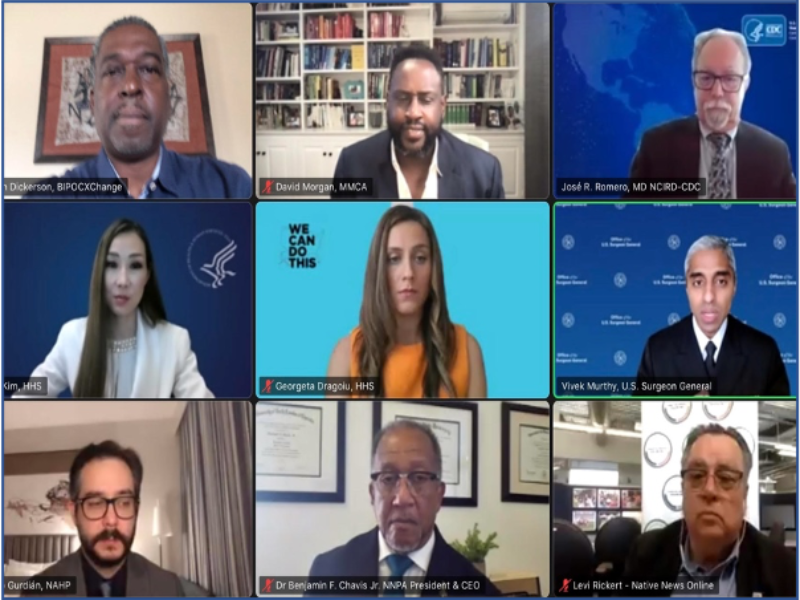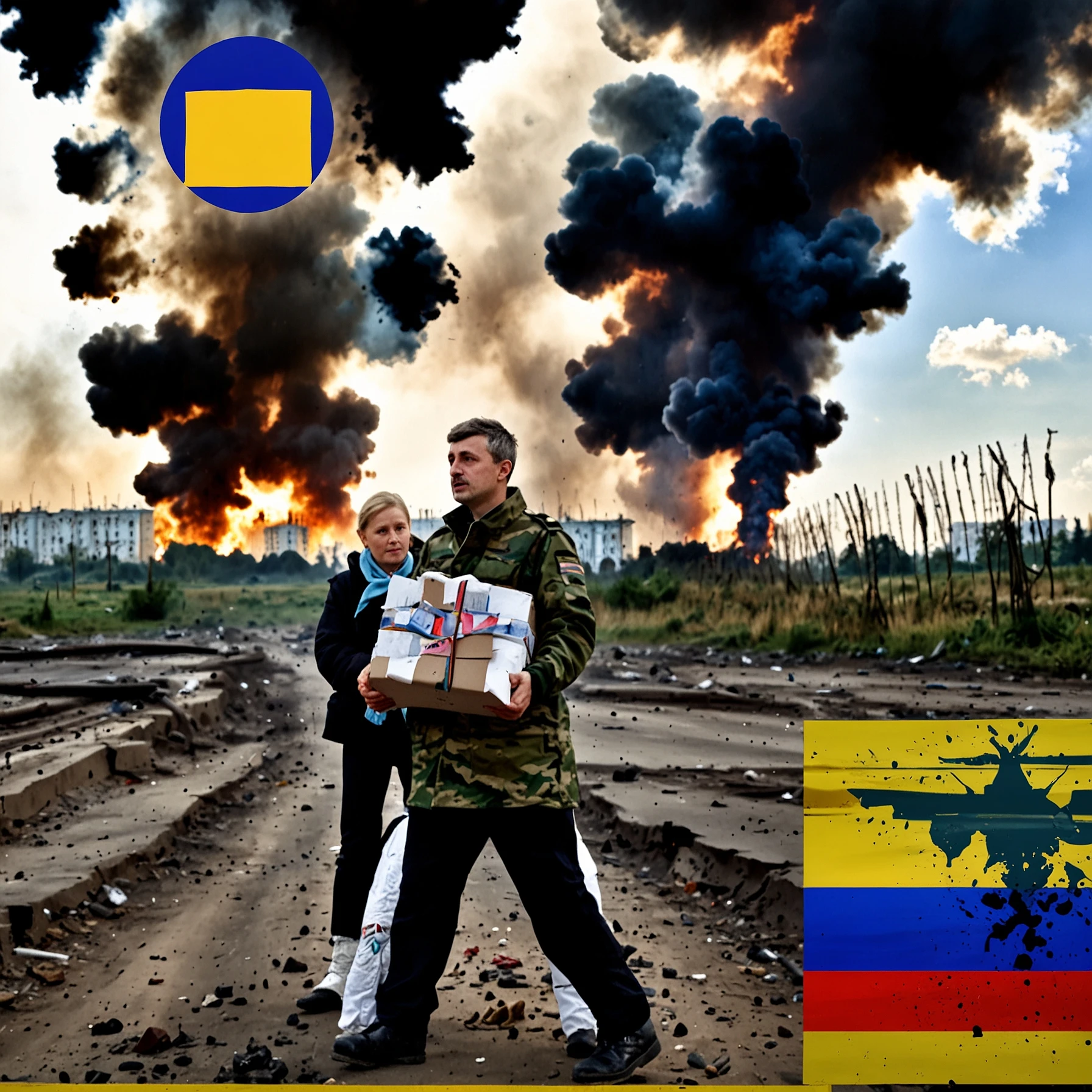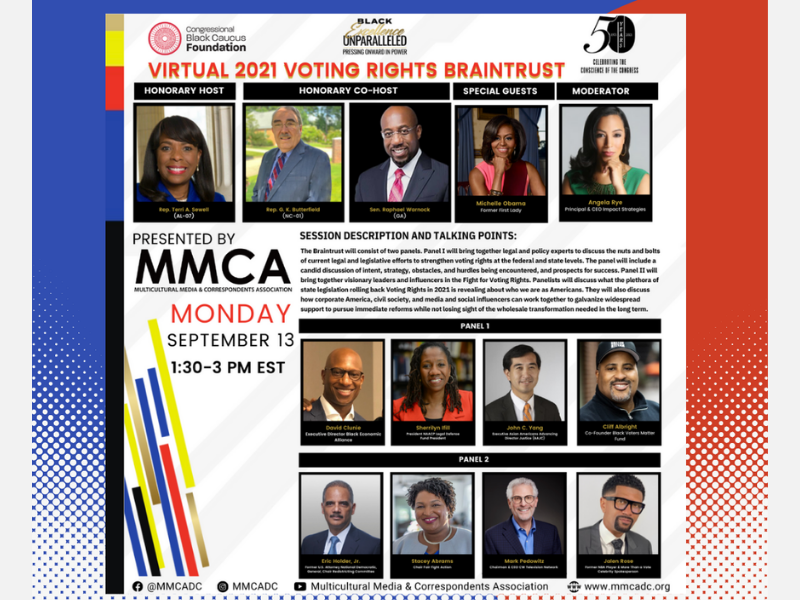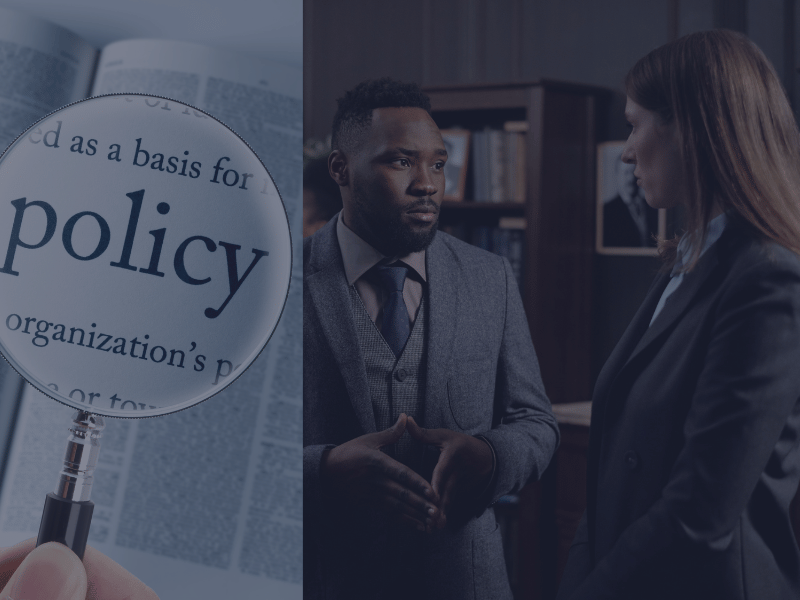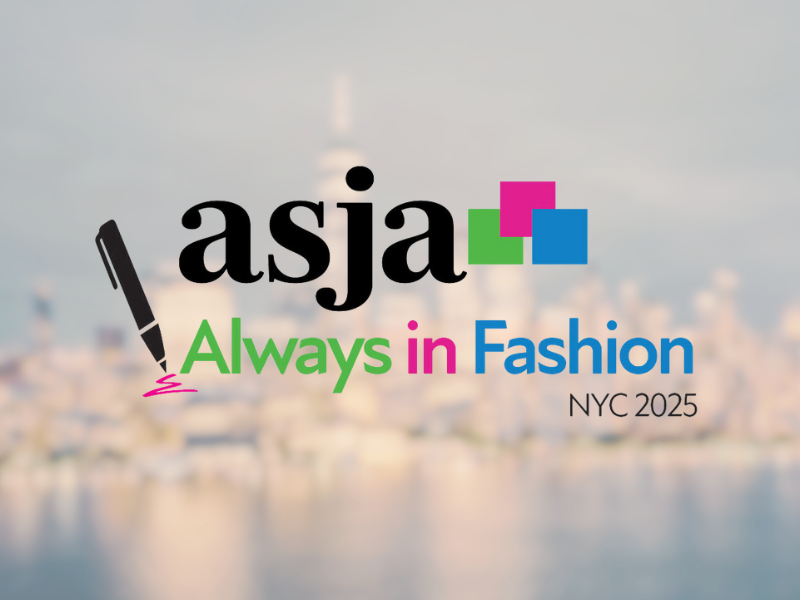Surgeon General uplifts role of multicultural media and other trusted messengers in closing COVID vaccine and health equity gaps
The Surgeon General and other health officials field questions about COVID vaccines and health equity issues from multicultural media professionals via the BIPOCXChange on Oct. 27, 2002.
Top U.S. health officials leverage the power of BIPOC media to inform and engage communities about the proven benefits of COVID vaccines and treatments and to combat misinformation as they work to save lives and head off a winter surge of the virus.
By Linda Miller
Oct. 29, 2022
WASHINGTON (BIPOCXChange Media Wire) – Federal health officials are looking to news outlets to boost awareness and uptake of life-saving COVID-19 vaccines as the weather turns colder and COVID infection rates begin their predictable rise. And judging from an online news conference held last week, multicultural media are ready to take up the challenge.
The hour-long briefing with top health officials was co-hosted by the U.S. Department of Health and Human Services (HHS) and the Multicultural Media & Correspondents Association using MMCA’s BIPOCXChange, a new digital platform created to connect multicultural media stakeholders with each other and with entities wanting to invest, engage and do business with them. It drew nearly 80 journalists and other media professionals, most of them representing Black, Hispanic, Asian American, and Native American communities that have disproportionately borne the brunt of COVID-19.
Addressing inequities was a central theme of the multicultural media briefing as well as the focus of the Biden-Harris Administration’s pandemic response and its “We Can Do This” vaccine public education initiative. Over the course of the vaccination rollout, Black and Hispanic people have been less likely than their White counterparts to receive a vaccine, but these disparities have narrowed over time and reversed for Hispanic people.
“COVID’s not done with us yet, but we’ve got more resources and tools than ever before, between the vaccines, the masks that we can get to all communities, the availability of tests, and the availability of treatments that can save your life or keep you out of the hospital,” said Dr. Cameron Webb, White House senior policy advisor for COVID-19 equity. “We’ve got to make sure that we are getting these to the people who need them most.”
(To view the multicultural media press conference, click here.)

In late August, the Food and Drug Administration approved new, updated COVID-19 vaccines that target both the new omicron variants and the original strain of the virus. The bivalent boosters are now authorized for use by those ages 5 and older who are at least two months out from their last shot, and administration officials believe they are a critical step to pushing the U.S. out of the pandemic.
“When we look at the data, what we see is that the vast majority who are dying from COVID right now are people who tend to be either unvaccinated or undervaccinated, meaning that they are not up-to-date with their vaccines, or they are people who have not actually received treatments like Paxlovid when they’ve gotten ill,” U.S. Surgeon General Dr. Vivek Murthy told reporters.
“This is such an important moment for us as we go into the winter to make sure we are taking all the right steps to protect people from the worst outcomes of COVID, and anything you can do to help get the word out will help us save lives and prevent people from ending up in the hospital.”
So far, Americans have been slow to get the new vaccine. As of Oct. 27, 22.8 million people or 7.3% of those eligible to receive the new shots have gotten them, according to just released CDC data. One reason could be that not enough people know about the shots or are confident that they qualify.
A national Kaiser Family Foundation poll conducted in late September found only modest awareness of the updated vaccine, with half of adults surveyed saying they had heard “a lot” (17%) or “some” (33%) about the updated booster, 31% saying they had heard “a little,” and one in five saying they had heard “nothing at all” about the new vaccine doses. Among adults who are fully vaccinated, 40% said they were unsure if the updated COVID-19 booster dose is recommended for them, with Black (47%) and Hispanic (51%) respondents even more uncertain.
Webb noted that partnerships with community-based organizations were key to closing racial gaps both in primary vaccinations and the first rounds of booster shots, and he said they will be critical this time around, too.
“We know there is a path to making sure equity is centered in the vaccination effort and it starts with respecting and acknowledging that people from the community really are going to be the key to our success, and recognizing that there are resources that are necessary to help support those organizations in their outreach and their work.”
Since the beginning of the Biden-Harris Administration, the “We Can Do This” campaign has partnered with more than 1,000 organizations, the majority of which work with minority or rural communities, reaching over 26 million people and resulting in tens of thousands of vaccinations, said Georgeta Dragoiu, an HHS public affairs official who works on the campaign.
Officials also have engaged ad agencies to co-create culturally relevant and in-language content, and campaign materials have been translated into more than 17 languages, including English, Spanish, Cantonese, Mandarin, Korean, Japanese and Vietnamese, she said.
And just this week, the campaign launched new national and local TV, radio and print ads in English and Spanish, geared at reaching Black and Latino audiences in more than 30 markets, including Miami, Philadelphia, Baltimore and Columbia, S.C.

CDC also has created a variety of culturally relevant materials and worked closely with partners such as the American Academy of Pediatrics and the National Resource Center for Refugees, Immigrants and Migrants to offer additional resources including factsheets, videos, toolkits and conversation guides, noted Dr. Jose Romero, director of the National Center for Immunization and Respiratory Diseases, where he leads CDC’s efforts to detect, prevent and respond to vaccine-preventable and respiratory infectious disease threats.
“The CDC has worked to eliminate racial and ethnic inequities by addressing barriers to vaccination in structural and social conditions that give rise to them, such as lack of access to healthcare and insurance, missed opportunities to vaccinate, as well as misinformation and distrust,” Romero said. “We have focused efforts on vaccine supply, provider access, as well as recipient education.”
Several media representatives expressed appreciation for those and other efforts and asked what more they could be doing to inform and protect their communities.
Alvaro Gurdián, president of the National Association of Hispanic Publications (NAHP), wanted suggestions on how to use in-language and other materials to reach and engage their audiences. “We have ideas. This is what we do. But I’d also like to get your input on that.”
Preston Ng, development and programs associate for the Asian American Journalists Association, noted that AAJA has been at the forefront of ensuring that newsrooms are not exacerbating the stigmatization and racism that has been aimed at Asian American Pacific Islander communities due to COVID. “How can journalists continue to report on COVID and not perpetuate this stigma?” he asked.
David Morgan, president and CEO of the MMCA, inquired how equitable media organizations could better collaborate with one another and with HHS to “really deepen and make sure there is a consistent message, and that there is community voice and community engagement not only around COVID-19 but about health equity issues in general?”
And Dr. Benjamin F. Chavis Jr., president and CEO of the National Newspaper Publishers Association/Black Press of America, asked what administration officials are doing to dispel misinformation about vaccines and how multicultural media organizations might help.
Surgeon General Murthy urged media professionals to shine a light on those trusted voices in communities that are sharing accurate information.
“When we looked at people who changed their mind about getting vaccinated between January 2021 and the summer of ‘21, it turned out a big reason that folks decided to get vaccinated was because they talked to a family member, a friend or their healthcare provider,” Murthy said. “So the bottom line is there’s a lot that you can do to help lift up the right message and accurate, scientifically-based advice, but also to lift up the right messengers in communities.”
He added that churches and other civic organizations, beauty salons and barber shops, have “played a vital role in providing space and places where people can come and get vaccinated, and they often did this in partnership with local pharmacies. And of course, local doctors and nurses have been vital in this effort to get people vaccinated.”
Amplifying the voices of those trusted community messengers can also help counteract misinformation, he said.
“Accurate information is essential for us to make sure people get the vaccines and life-saving treatments they deserve. And unfortunately, we have seen an avalanche of misinformation during the last couple of years that I believe has actually cost us lives because it has turned people away from measures that could have protected them from the worst outcomes of COVID-19.”
In July of 2021, Murthy issued a Surgeon General’s Advisory on misinformation to combat the profound impact it was having on health, including tools and tips of what individuals can do to help make a difference.
Levi Rickert, founder, editor and publisher of Native News Online, noted that at one point, among People of Color, Native Americans led the way in terms of vaccination rates. “However, the data that we have is over a year old. How can we get that updated so we can do better reporting among our community?” he asked.
Webb acknowledged that there is room for improvement in data collection and dissemination, especially when it comes to disaggregating data within different communities of color, and he encouraged journalists to keep pushing public health officials to do better.
Accurate data, he added, “is really going to right our path in so many ways.”
“We know that COVID has had disproportionate impacts. And we want to make sure we are leaning into moments like this, at the start of this fall, as we head toward this holiday season, to say we’ve seen the data of what happens in the winter, we’ve seen what happens if you’re not protected and we have high levels of infection of COVID, and we know that it hurts communities of color the most,” Webb said.
“We know these data are true. And so what stands to reason is that we need to take this moment to do everything we can to get those resources—the masks, the tests, the vaccines and the treatments—to communities to make sure they are ready.”
